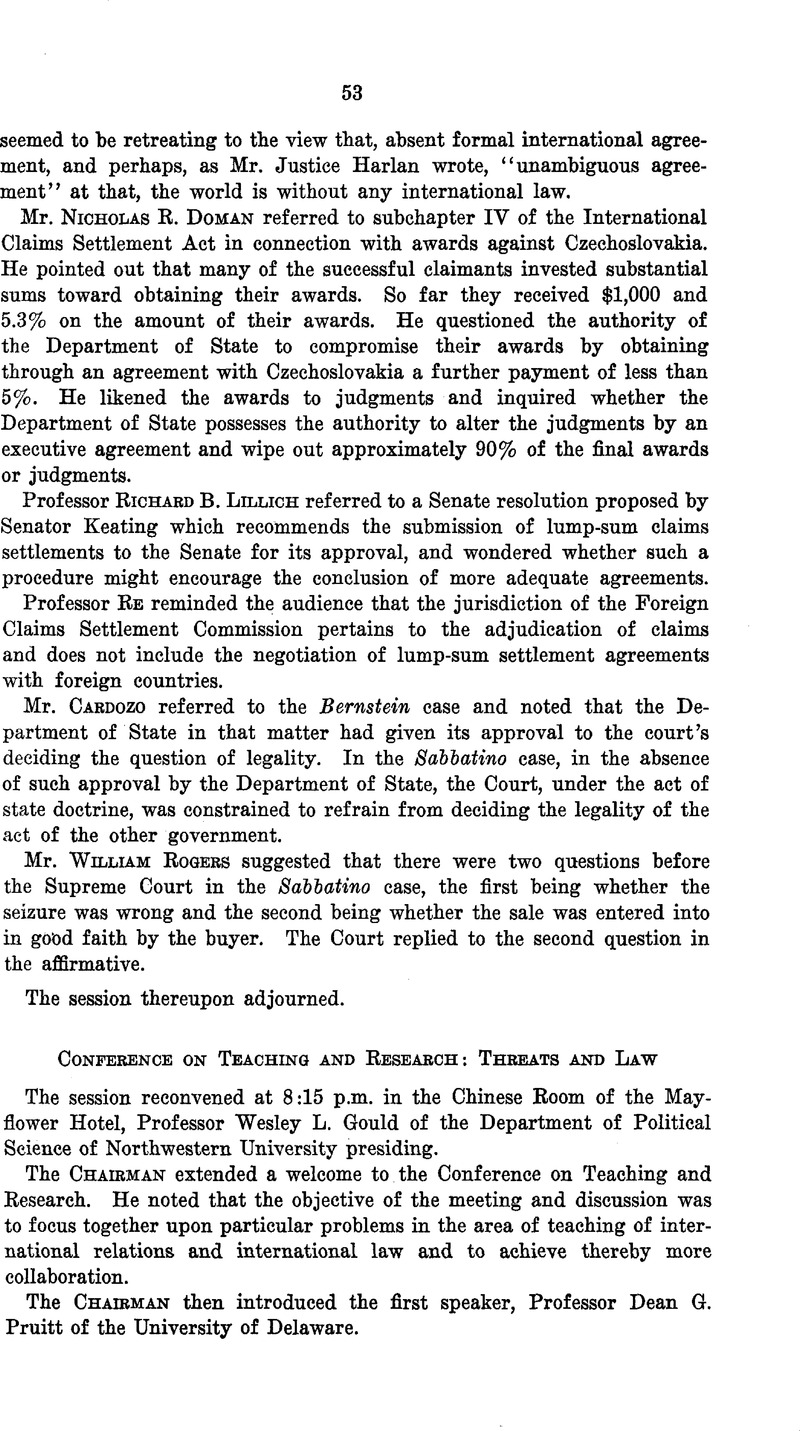No CrossRef data available.
Published online by Cambridge University Press: 27 February 2017

1 Earlier reports on portions of this study can be found in Pruitt, “An Analysis of Eesponsiveness between Nations,” in 6 Journal of Conflict Eesolution 5-18 (1962), and idem, “National Power and International Eesponsiveness,” in Background (in press).
2 “Hypotheses on Relationships between the Organization of International Society and International Order,” in 1963 Proceedings, American Society of International Law 36-46.
3 A similar proposition is stated by Falk, “Revolutionary Nations and the Quality of International Legal Order,” in M.A. Kaplan (ed.), The Revolution in World Politics (Wiley, 1962).
4 Political Community and the North Atlantic Area (Princeton Univ. Press, 1957).
5 “International Communication and Legislative Behavior: the Senate and the House of Commons,” in 6 Journal of Conflict Eesolution 291-307 (1962).
6 “Operation of the Legal Adviser's Office,” in 43 A.J.I.L. 122-127 (1949).
7 “The United States Beaction to the Korean Attack: a Study of the Principles of the United Nations Charter as a Factor in American Policy-Making,” in 55 ibid. 45-76 (1961).
8 Guetzkow et at., Simulation in International Eelations (Prentice-Hall, 1963); Brody, “Some Systemic Effects of the Spread of Nuclear Weapons Technology: a Study through Simulation of a Multi-Nuclear Future,” 7 Journal of Conflict Resolution 665-753 (1963).